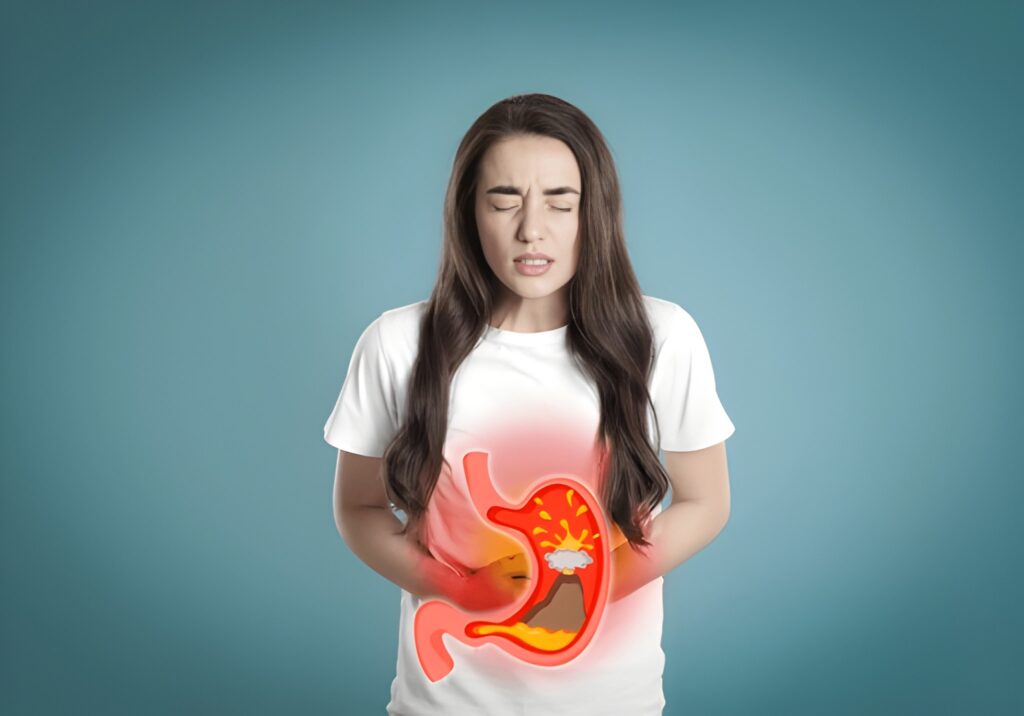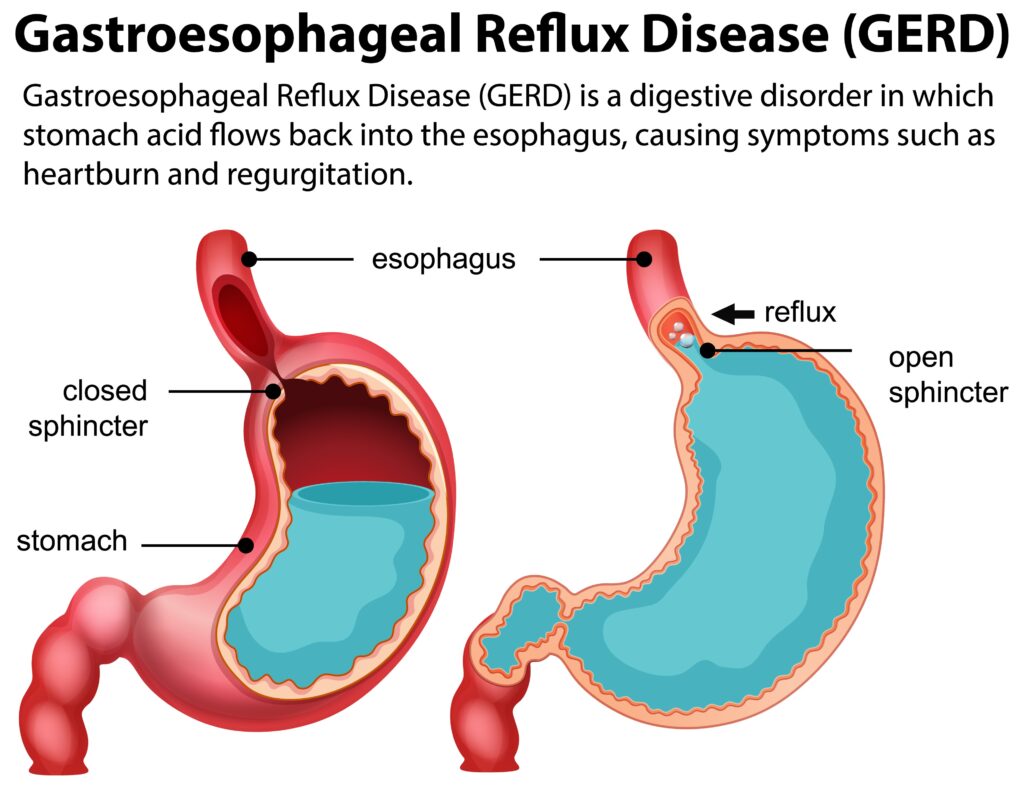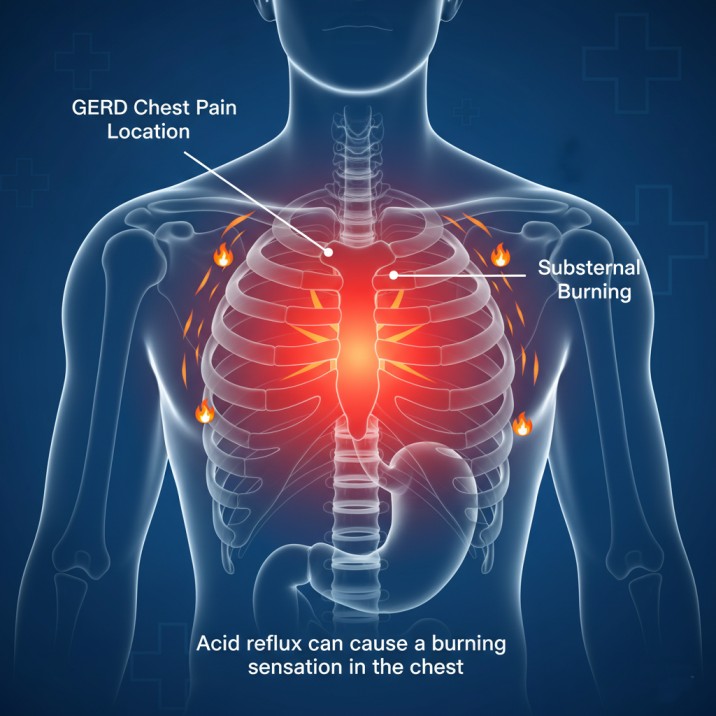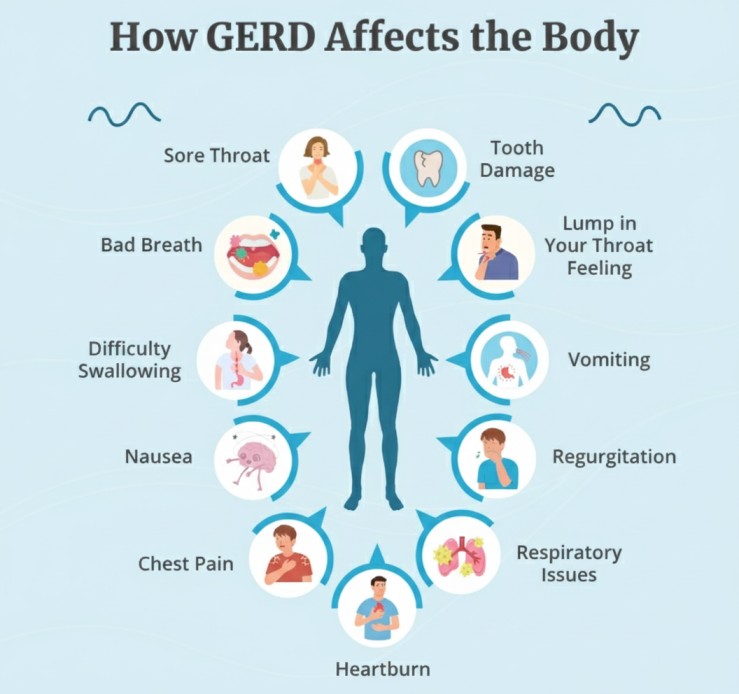GERD Chest Pain Location: Key Symptoms and Differences

Experiencing chest pain can be a frightening and bewildering experience. Your mind may immediately jump to the worst-case scenario: a heart attack. While it is crucial to take any chest pain seriously, it’s also important to understand that not all chest pain is related to the heart. A very common culprit behind chest discomfort is Gastroesophageal Reflux Disease (GERD).
This comprehensive guide, brought to you by the Dr. Samir Rahmani, a leading expert in upper gastrointestinal health, will walk you through everything you need to know about GERD chest pain location, its key symptoms, and how it differs from cardiac-related pain. Our goal is to empower you with knowledge, so you can make informed decisions about your health.
Meet Your Expert: Dr. Samir Rahmani
Before we dive in, it’s important to know you’re in trusted hands. Dr. Samir Rahmani is a reputable UK-trained consultant bariatric, laparoscopic, and general surgeon. With qualifications including a Diploma, MSc, MD, and FRCS from the Royal College of Surgeons of England, his expertise is at the forefront of his field. Dr. Rahmani is a pioneer in a variety of innovative techniques, including minimally invasive and surgical weight loss procedures, specializing in treating weight-related issues such as diabetes, high blood pressure, high cholesterol, arthritis, sleep apnea, snoring, infertility, ovarian cysts and more. His deep understanding of the digestive system makes him an authority on conditions like GERD.

What is GERD, and Why Does it Cause Chest Pain?
Gastroesophageal Reflux Disease (GERD) is a chronic digestive disorder. It occurs when stomach acid frequently flows back into the tube connecting your mouth and stomach (esophagus). This backwash (acid reflux) can irritate the lining of your esophagus.
Think of your esophagus and stomach as being separated by a valve-like muscle called the lower esophageal sphincter (LES). Normally, the LES opens to allow food to pass into your stomach and then closes tightly to prevent stomach contents from flowing back up. In people with GERD, the LES is weak or relaxes when it shouldn’t, allowing stomach acid to splash up into the esophagus.
Why does GERD cause chest pain?
This is a key question. The esophagus and the heart are located in the same area of the body, the chest and they share a similar nerve supply. When stomach acid irritates the sensitive lining of the esophagus, it can cause a painful, burning sensation that feels very much like it’s coming from the heart. This is why chest pain from GERD is so often mistaken for something more sinister.
The All-Important Question: Where is GERD Chest Pain Felt?
Understanding the typical GERD chest pain location is the first step in identifying whether your discomfort might be related to acid reflux. Here are the most common areas where people experience this pain:
- Central Chest Pain: The most classic location for GERD-related chest pain is right in the center of the chest, behind the breastbone (sternum). This is often described as a pain in the sternum from acid reflux. The pain is usually located in the upper part of the abdomen and the lower to mid-chest.
- Substernal Pain: The term “substernal” literally means “below the sternum.” This is the area just below your breastbone, and it’s a very common spot for heartburn chest pain.

- Upper Chest Discomfort: While the central chest is the most common area, some people experience GERD upper chest discomfort. This can feel like a pressure or a burning sensation that’s higher up, closer to the throat.
- Pain Radiating to the Back: It’s not uncommon for GERD pain to start in the chest and then radiate, or spread, to other areas. Some people report GERD pain radiating to their back, specifically between the shoulder blades.
- Throat and Neck Pain: In some cases, the acid can travel all the way up the esophagus, causing a sore throat, a hoarse voice, or a feeling of a lump in the throat. This is sometimes accompanied by chest pain.
How Does GERD Chest Pain Feel? The Telltale Sensations
Now that we’ve covered the acid reflux chest pain location, let’s talk about what the pain actually feels like. While everyone’s experience is slightly different, here are some of the most common descriptions of how GERD chest pain feels:
- A Burning Sensation: This is the hallmark symptom of heartburn and GERD. Many people describe it as a burning chest pain, almost like a fire in their chest. This burning sensation in the chest after eating is a classic sign of acid reflux.
- A Squeezing or Tightness: Some people experience a feeling of pressure or chest tightness with GERD. This can be particularly alarming, as it’s also a symptom of a heart attack.
- A Sharp, Stabbing Pain: While less common than a burning sensation, some individuals with GERD report a sharp, stabbing pain in their chest.
- A Dull, Aching Pain: For others, the pain is a more persistent, dull ache in the center of their chest.
- A Feeling of Fullness: Sometimes, the discomfort is not so much a pain as it is a feeling of uncomfortable fullness or bloating in the chest.
GERD vs. Heart Attack Pain: Key Differences to Look For
This is, without a doubt, the most critical part of this guide. Differentiating between GERD and cardiac chest pain can be difficult, even for medical professionals. However, there are some key differences that can help you make a more informed assessment.
Disclaimer: If you have any doubt whatsoever about the cause of your chest pain, seek emergency medical attention immediately. It is always better to be safe than sorry. Do not try to self-diagnose a heart attack.
Read – Heartburn, Acid Reflux, or GERD: What’s the Difference?
Here's a table to help you understand the potential differences between heart attack or acid reflux chest pain:
Feature | GERD Chest Pain | Heart Attack Chest Pain |
Location | Usually central, behind the breastbone. Can radiate to the back, throat, or neck. | Often starts in the center or left side of the chest. Can radiate to the jaw, neck, shoulders, and one or both arms (most commonly the left). |
Sensation | Burning, squeezing, sharp, or dull ache. | Crushing pressure, squeezing, tightness, or a heavy weight on the chest. |
Triggers | Often occurs after eating, especially a large, fatty, or spicy meal. Lying down or bending over can make it worse. | Can happen at any time, but often triggered by physical exertion or emotional stress. |
Accompanying Symptoms | Heartburn, regurgitation (acid taste in the mouth), bloating, burping, difficulty swallowing. | Shortness of breath, cold sweat, nausea, vomiting, dizziness, lightheadedness, extreme fatigue. |
Relief | Often improves with antacids or by sitting up. | Does not typically improve with antacids or changes in position. May lessen with rest. |
Duration | Can last for a few minutes to several hours. May come and go. | Usually lasts for more than a few minutes and is often a constant, intense pain. |
Red Flags: When to Suspect a Heart Attack
Again, if you are in doubt, call for emergency medical help. Pay close attention to these red flag symptoms, which are more indicative of a heart attack than GERD:
- Sudden, severe, and crushing chest pain
- Pain that radiates to your jaw, neck, or left arm
- Shortness of breath
- Breaking out in a cold sweat
- Feeling dizzy, lightheaded, or like you’re going to faint
- Nausea and vomiting
Other Common GERD Symptoms Beyond Chest Pain
While GERD symptoms chest pain is a major complaint, it’s often accompanied by other signs that point to a digestive issue rather than a cardiac one. These include:
- Heartburn: A burning sensation in your chest that can move up into your throat.
- Regurgitation: A sour or bitter-tasting acid backing up into your throat or mouth.
- Dysphagia: The sensation of food being stuck in your throat or difficulty swallowing.
- Chronic Cough: A persistent cough, especially at night.
- Hoarseness or a Sore Throat: Stomach acid can irritate your vocal cords.
- Asthma-like Symptoms: Acid reflux can sometimes trigger wheezing and shortness of breath.
- Bloating and Burping: An excess of gas is common with GERD.

What to Do for GERD-Related Chest Pain: Remedies and Lifestyle Changes
If you and your doctor have determined that your chest pain is indeed related to GERD, there are several steps you can take to manage and prevent it. Here are some effective GERD-related chest pain remedies:
Lifestyle Modifications
- Eat Smaller, More Frequent Meals: Large meals can put pressure on your LES, making reflux more likely.
- Avoid Trigger Foods: Common culprits include spicy foods, fatty foods, fried foods, chocolate, caffeine, and acidic foods like tomatoes and citrus fruits.
- Don’t Lie Down After Eating: Wait at least 2-3 hours after a meal before lying down or going to bed. This is especially important for those who experience chest pain lying down from acid reflux.
- Elevate the Head of Your Bed: Raising the head of your bed by 6-8 inches can help gravity keep stomach acid where it belongs.
- Maintain a Healthy Weight: Excess weight puts pressure on your abdomen and can worsen GERD symptoms.
- Quit Smoking: Smoking can weaken the LES.
- Limit Alcohol Consumption: Alcohol can also relax the LES.
Over-the-Counter (OTC) Medications
- Antacids: These provide quick, temporary relief by neutralizing stomach acid.
- H2 Blockers: These medications reduce the amount of acid your stomach produces.
- Proton Pump Inhibitors (PPIs): These are more powerful acid-reducers and can be very effective for frequent GERD symptoms.
Important Note: While OTC medications can be helpful, it’s essential to talk to your doctor before starting any new medication, especially if you’re taking them regularly.
Frequently Asked Questions (FAQs) About GERD Chest Pain
Yes, it can. While GERD pain is most often felt in the center of the chest, the shared nerve pathways can sometimes cause the pain to be perceived on the left side, mimicking cardiac pain. This overlap is a primary reason why any new or severe left-sided chest pain should be evaluated by a medical professional immediately.
The duration can vary widely. It might be a brief, sharp pain that lasts only a few minutes, or it could be a dull, burning sensation that persists for several hours. It often depends on the trigger, such as a large meal, and may subside after taking an antacid or once digestion has progressed.
Absolutely. This is known as “silent reflux” or non-erosive reflux disease (NERD). In these cases, the primary symptom might be chest pain, a chronic cough, hoarseness, or a feeling of a lump in the throat, without the characteristic burning sensation of heartburn.
When you’re standing or sitting up, gravity helps keep stomach acid down. When you lie flat, it’s much easier for the acid to flow back into the esophagus, leading to irritation and pain. This is why experiencing chest pain lying down with acid reflux is a common complaint.
Yes. While stress doesn’t directly cause GERD, it can make symptoms worse. Stress can increase the production of stomach acid and also heighten your perception of pain, making a reflux episode feel much more severe.
Sometimes it can. The pain can be a dull ache or a sharp, localized pain that might be confused with a musculoskeletal issue like a pulled muscle in the chest wall. However, GERD pain is more likely to be related to eating and less likely to be affected by pressing on the chest or moving a certain way.
While less common, it is possible. Sometimes, the pain from esophageal irritation can be “referred” to the back, typically between the shoulder blades. However, if back pain is your only symptom, it’s important to consult a doctor to rule out other causes.
For immediate, temporary relief, you can try standing up straight to help gravity, drinking a small amount of water to wash acid down, or taking an over-the-counter antacid. Chewing sugar-free gum can also help by increasing saliva production, which neutralizes acid. These are short-term fixes, not long-term solutions.
This is rare for GERD but a classic symptom of a heart attack. While severe esophageal spasms can theoretically cause pain to radiate, any chest pain that spreads to the arm (especially the left arm), jaw, or shoulder should be treated as a medical emergency until proven otherwise.
Yes, it is very typical for GERD-related chest pain to be intermittent. It often flares up after meals or when lying down and then subsides. This episodic nature is one of the features that can help distinguish it from the more constant, severe pain of a heart attack.
When to See a Doctor
While occasional heartburn is common, you should see a doctor if:
- You experience chest pain for the first time, especially if you’re unsure of the cause.
- Your symptoms are severe or frequent (occurring more than twice a week).
- Over-the-counter medications aren’t providing relief.
- You have difficulty swallowing.
- You experience unexplained weight loss, vomiting, or signs of bleeding.
A Final Word from Dr. Samir Rahmani's Practice
Navigating the world of non-cardiac chest pain can be stressful, but understanding the signs and symptoms of GERD is a powerful first step. By paying attention to your body and making informed lifestyle choices, you can take control of your digestive health.
This guide is for informational purposes only and should not replace professional medical advice.
If you’re experiencing ongoing GERD symptoms or are concerned about chest pain, don’t wait. Schedule a consultation with Dr. Samir Rahmani. With the right diagnosis and treatment, you can find lasting relief and return to living life fully.

